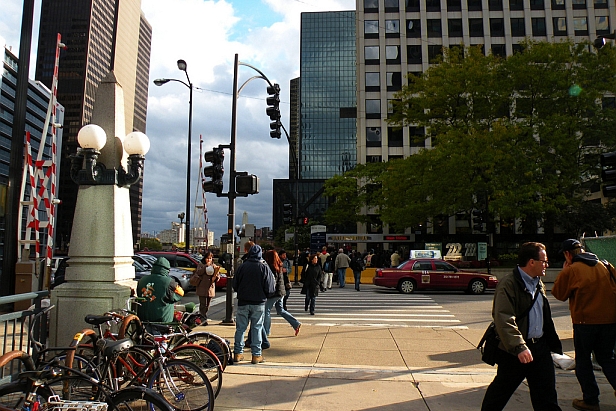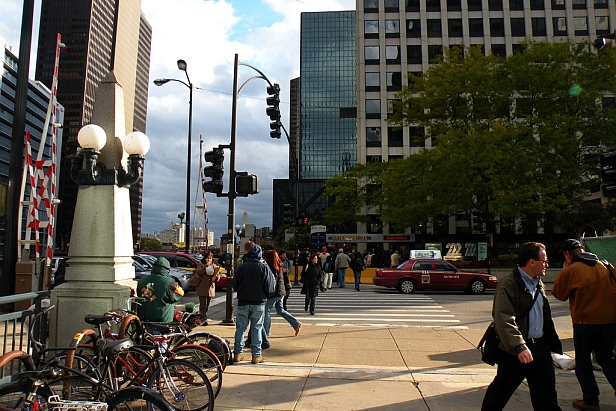 Downtown ChicagoPhoto: Chicago Man via FlickrBusinesses ought to consider locating in walkable, culturally diverse city centers because that’s where young workers want to be, according to some liberal commie rag printed on recycled draft cards. No, scratch that, this argument comes from the Harvard Business Review.
Downtown ChicagoPhoto: Chicago Man via FlickrBusinesses ought to consider locating in walkable, culturally diverse city centers because that’s where young workers want to be, according to some liberal commie rag printed on recycled draft cards. No, scratch that, this argument comes from the Harvard Business Review.
An article in the May issue opens with the news that United Airlines is moving its headquarters to downtown Chicago from the outer-ring suburb Elk Grove, while Quicken Loans plans to build headquarters in downtown Detroit.
“These companies are getting a jump on a major cultural and demographic shift away from suburban sprawl,” writes Assistant Editor Ania Wieckowski. “The change is imminent, and businesses that don’t understand and plan for it may suffer in the long run.”
She finds that both young workers and retiring baby boomers want neighborhoods that offer shops, parks, schools, arts centers, and the like. The same preference holds for compact suburban cores, so it’s not as if every business in Chicago needs to find space in the downtown Loop. There’s data behind this: In the last U.S. census, 64 percent of college-educated 25- to 34-year-olds said they searched for a job after choosing the city where they wanted to live.
It’s not just a matter of taste. There are a lot of real problems associated with auto-dependent living, says Wieckowski.
“Studies in 2003 by the American Journal of Public Health and the American Journal of Health Promotion linked sprawl to rising obesity rates,” she writes. “… Research by behavioral economist Daniel Kahneman and his team shows that out of a number of daily activities, commuting has the most negative effect on people’s moods. And economists Bruno S. Frey and Alois Stutzer have found that commuters who live an hour away from work would need to earn 40% more money than they currently do to be as satisfied with their lives as noncommuters.”
Wieckowski quotes Robert Fishman, a University of Michigan urban planning professor: “In the 1950s, suburbs were the future. The city was then seen as a dingy environment. But today it’s these urban neighborhoods that are exciting and diverse and exploding with growth.”
This is great stuff, and not just because it comes from a respected, clean-cut publication. Urban-minded employees can only do so much if their jobs require them to commute to the outskirts. Successful city centers require more than condos and retail shops-they need major employers.
My one-time hometown of Grand Rapids, Mich. (metro population 770,000), is a perfect case study. There’s a fair bit of urban redevelopment and it’s got loads of creative types building civic culture through things like the public contest ArtPrize. Yet all of the region’s largest businesses-which include Amway, Wolverine, and the furniture maker Steelcase–are headquartered on the suburban fringe. The only large employers downtown are the government buildings. If more executives locate their companies downtown to attract new talent, as HBR advises, they can provide a major boost for compact urban designs, and all the social benefits they bring.


